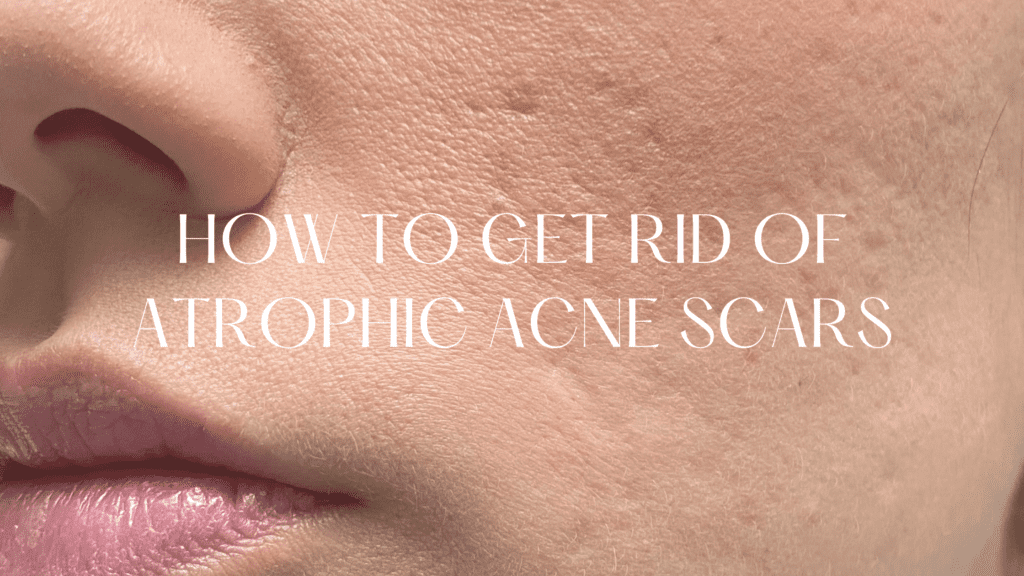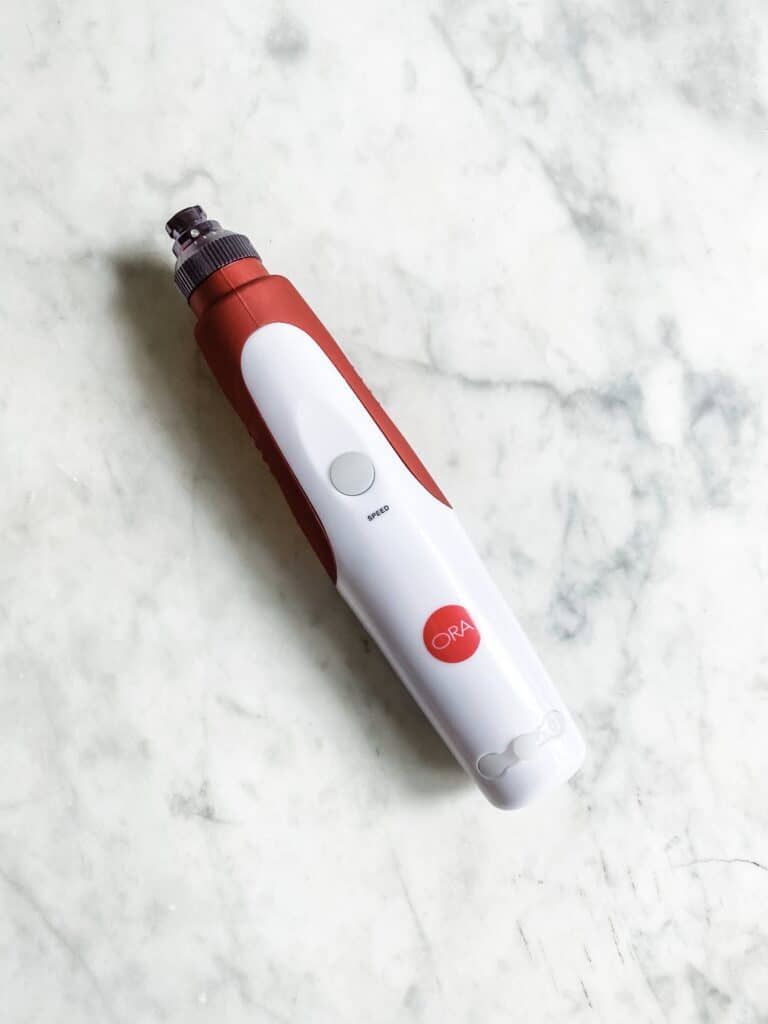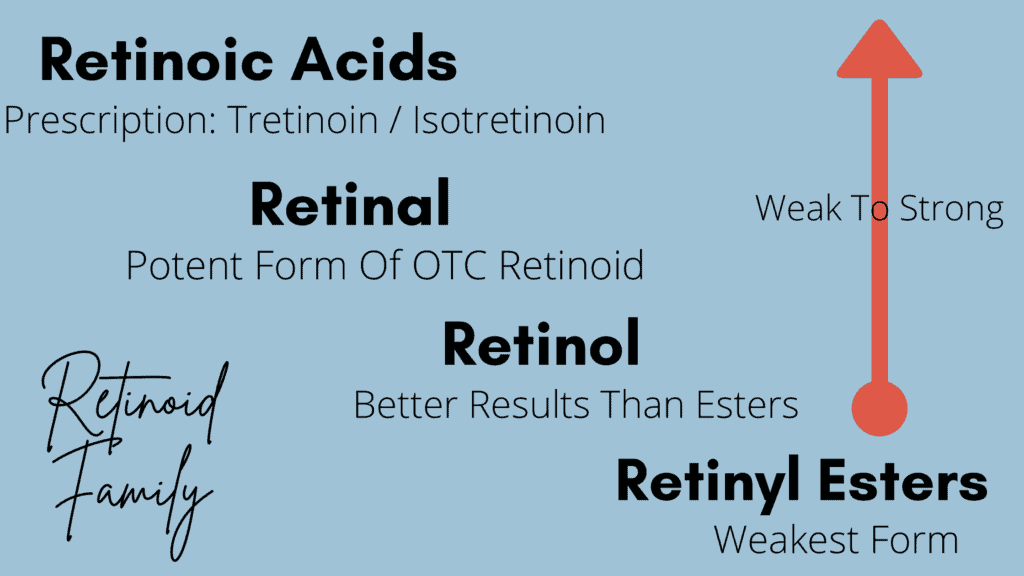Getting rid of atrophic acne scars can be challenging, but not impossible! (I know from personal experience!) While red spots on the face (PIE marks) are superficial and easily treatable, atrophic acne scars look like craters in the skin. This takes more time and patience to fix – especially if you are trying to do it at home.
But don’t despair: if you are affected by atrophic/pitted acne scars, read on for realistic and useful information on how to get rid of atrophic acne scars on your own.
What Is An Atrophic Acne Scar?
To be clear on the issue we are tackling here, let’s dive into how atrophic acne scars work so we know how we need to treat them. Atrophic acne scars can also be referred to as pitted acne scars.
According to NCBI, “…In 80 to 90 percent of [acne] cases, there is a net destruction of collagen in the dermis that results in atrophic scars.”

Causes of Atrophic Acne Scars
Basically, this type of acne scar occurs when the skin is unable to rebuild the collagen destroyed from acne infections/breakouts. That area has healed below the normal skin surface level, leaving a depressed mark or pit.
As if that’s not bad enough, there are 3 types of ways a pitted scar can be classified.
Three Types of Atrophic Acne Scars
If you have atrophic acne scars, they might fall into three categories describing their depth, shape, and size.
Icepick, Rolling, and Boxcar Scars
Icepick scars – these are deep, narrow, pitted scars
Rolling scars – broad depressions with a sloping edge
Boxcar scars – broad depressions with sharply defined edges
Definitions from DermNet NZ

How To Get Rid Of Atrophic Acne Scars
Listed below are easy treatments you can do at home to get rid of pitted acne scars.
First up, it is worth noting that you need to make sure you have active acne under control before treating pitted scars. If your acne is severe, the cycle of new acne scars appearing will be constant!
1. Microneedling
Microneedling is very effective for repairing deep acne scars. This is what I personally focused on for my scars!
Basically, microneedling helps boost the production of collagen and will repair the scar from the inside out. If you have deep scars, this will be essential to replace the collagen that was damaged, and that caused the indention.

A microneedling pen can be used at home and it’s an easy process. I use the ORA Electric Microneedle Roller Derma Pen System and I love it.
Pens are the type of device used in a dermatologist’s office. You can save tons of money and get more effective results by using a pen at home!
Try starting your microneedling journey with 3 sessions spaced out a month in-between, then move on to the options below. I will explain why further on.
ALSO, I PERSONALLY & STRONGLY RECOMMEND NOT USING A DERMAROLLER. Dermarollers can do more damage to your skin.
If you’d like many useful articles on how to use a microneedling pen, detailed explanations on how it rebuilds collagen, as well as the best pen options to choose from, check out my Get Rid Of Acne Scars archives.
Disclosure: This blog post contains affiliate links, which means I make a small commission on a purchase without an additional cost to you if you buy something through the link.
2. Retinoids
Retinoids are topicals that will help slightly to fill in depressed acne scars. It works from the inside out, stimulating collagen to help plump up scars.
Furthermore, it also lightens the red marks that might be making your scars more noticeable. Once that’s gone, then your eye is drawn away from the scar.
Here is a breakdown of the retinoid family:

If you are new to using retinoids, start with retinol. There are effective, affordable options to choose some. Some personal favorites that I’ve tried and saw make a difference:
If you have skin that can handle a stronger version, use Curology to get an at-home prescription of tretinoin. It’s very accessible and the formulation is so effective.
I saw the texture and pigmentation improve greatly after using the tretinoin from Curology. It typically works faster than retinol since it is stronger.
If you are planning on doing another microneedling session, stop using your retinoid product for two weeks before to give your skin a break. The combination of microneedling and using retinoids is just too harsh to use together.
Use your retinoid product at night after cleansing.
You will want to gradually step into using the product to prevent dryness and irritation. Here is a great article explaining why.
3. Vitamin C
Vitamin C helps stimulate collagen and promotes cellular turnover which is necessary for lifting up those scars, as well as makes the scars look lighter. Overall, after using Vitamin C the texture of my skin much more even toned and pretty. Your skin will look its best and draw attention away from scars as much as possible.
Options:
I think you can choose between retinoids or Vitamin C. It might not do much to use both in your skincare routine, except for irritate your skin.
Use this in the morning after cleansing.
4. Exfoliation
The Ordinary Peeling Solution is such a popular, viral product for good reason:
It will help your skin look beautiful and radiant, as well as diminishes how your indented scars will look. This sloughs off the top layer of dead skin to reveal baby fresh skin underneath.
It won’t completely get rid of acne scars on its own, but when you combine it with the other options it’s like secret sauce for smooth, even toned skin.
This is best done once a week, on a night out aren’t using retinoids, or doing microneedling.
5. Sunscreen
If you are going to incorporate all the methods mentioned above, be sure to wear sunscreen!
Still, even if you don’t use these products, wearing sunscreen is so crucial because it prevents the sun from breaking down your skin. Your scars may look worse if you let sun rays break down the collagen further. Skin will look overall saggy, pigmentation darker, etc.
Try a mineral sunscreen which will be less irritating/make you less prone to breakouts!
Final Thoughts of How To Get Rid Of Pitted Acne Scars
So now you know some of the most realistic ways to effectively and affordably get rid of pitted acne scars at home, which can be done by the everyday person!
If you can’t afford going to the dermatologist and spending lots of money on cosmetic procedures, these ways will be super effective and basically get a similar job done at home for less.
To be clear, there is no magic acne scar removal that will work overnight. Please don’t fall for creams that promise this!
The certain topicals mentioned above will help with the appearance but it definitely takes time and patience.
If you have been struggling with pitted acne scars for a while, definitely give these options a shot because I have personally seen such improvement from using these exact same procedures and products. Good luck!
Best, Mia
This content is for informational purposes only, and what has worked for me personally based on my own opinions. I am not a professional/medical doctor, and you should always consult your doctor or dermatologist on what will work best for you. The information presented here is not legitimate, official advice from a professional. If you choose to rely on any information from this blog, you do so at your own risk. Please refer to the “Blog Disclaimer” tab in the menu bar to read more information and the official disclaimer statement.



